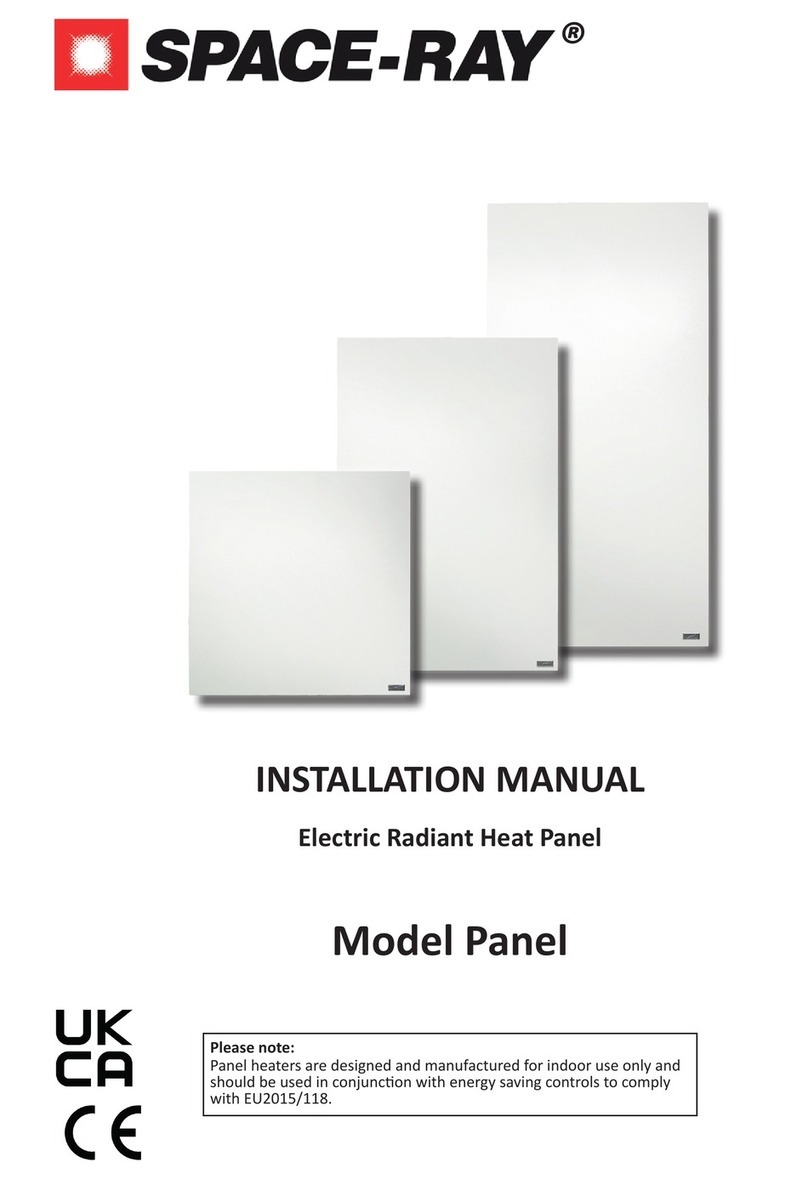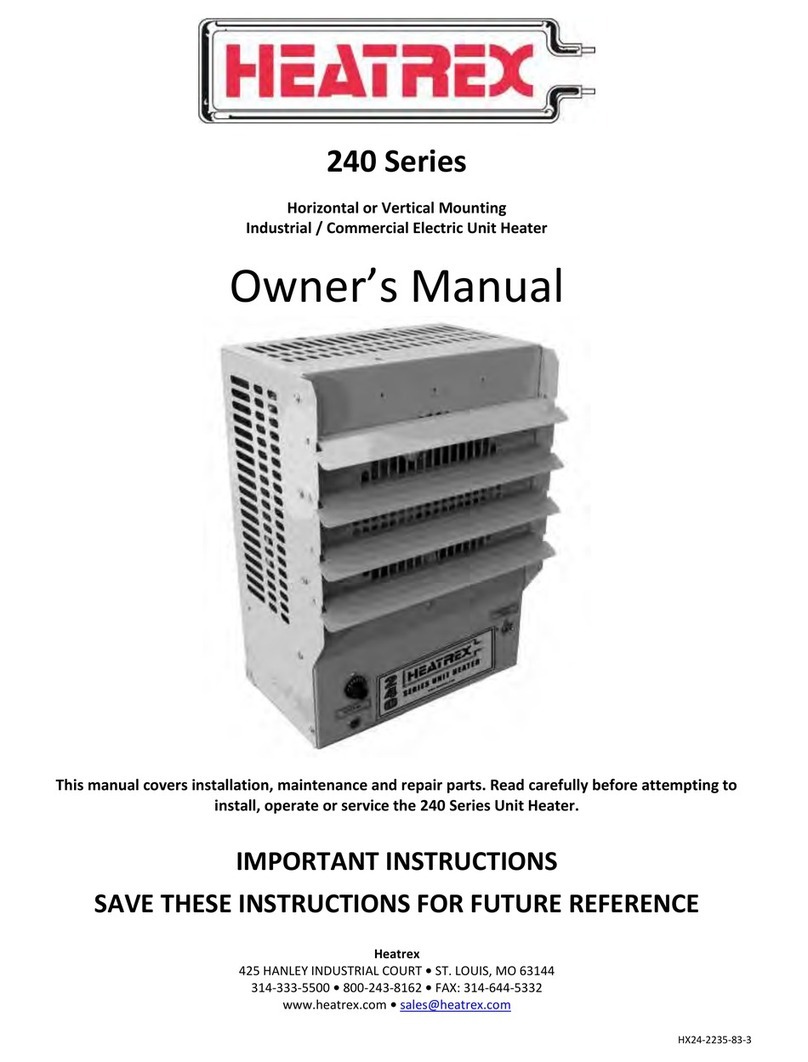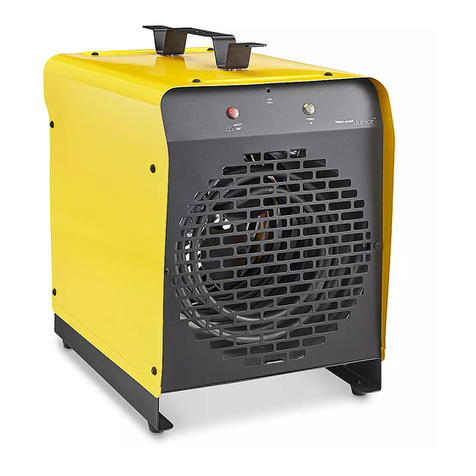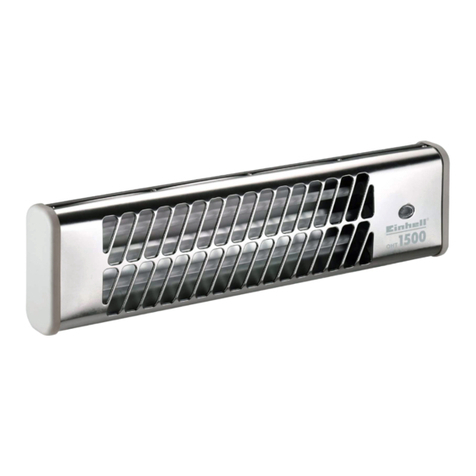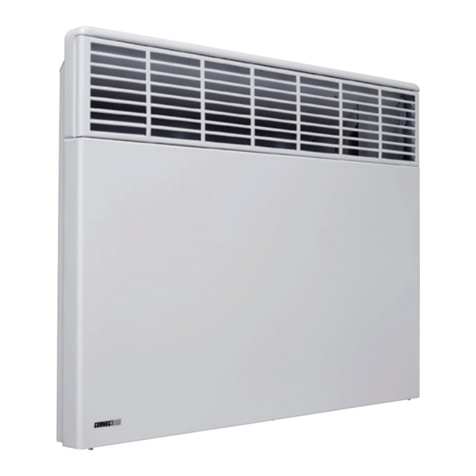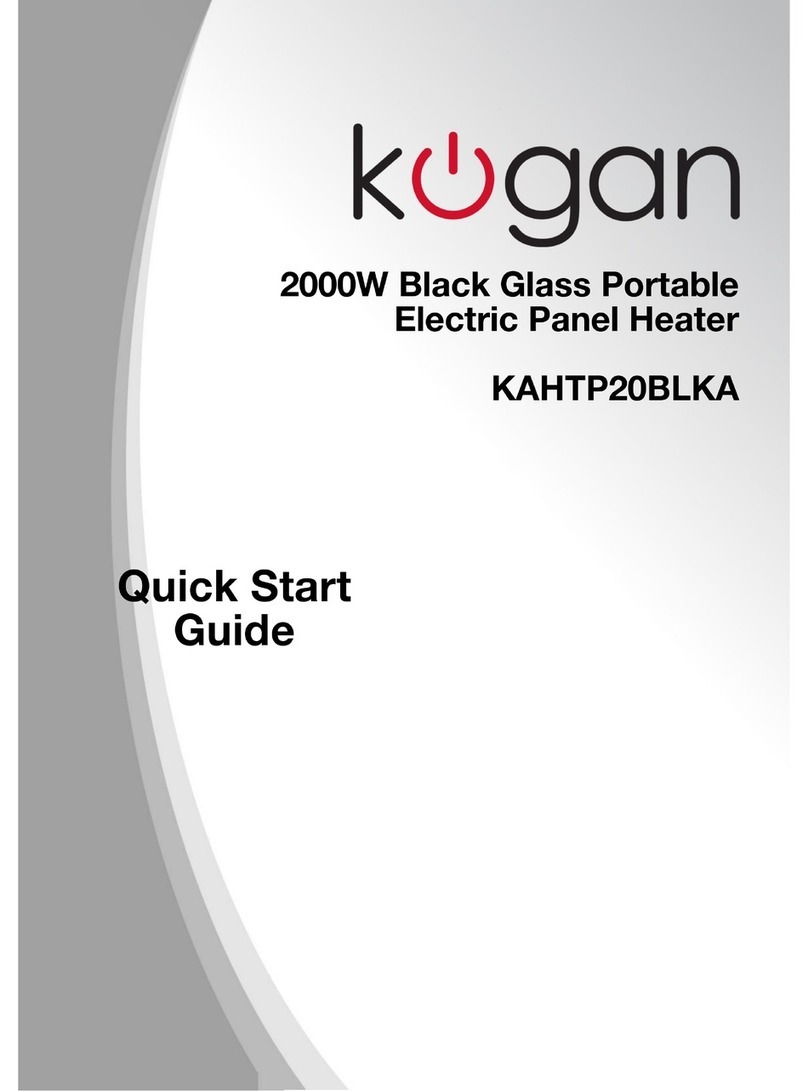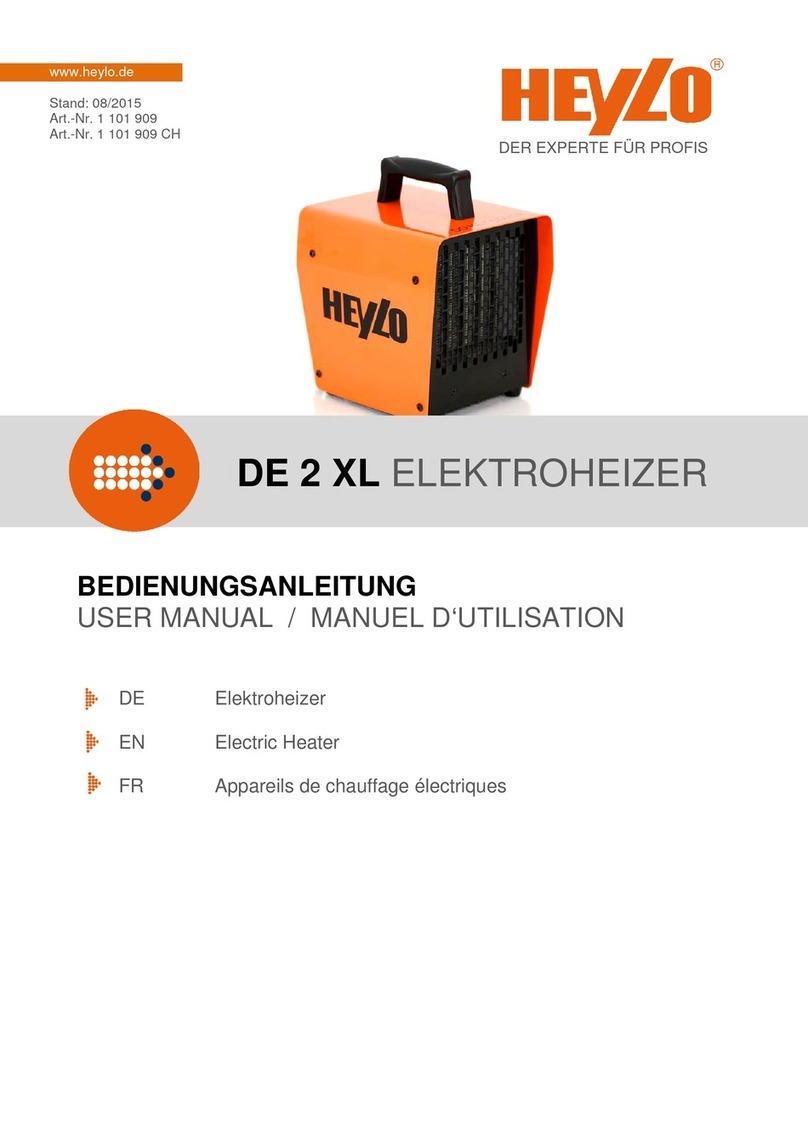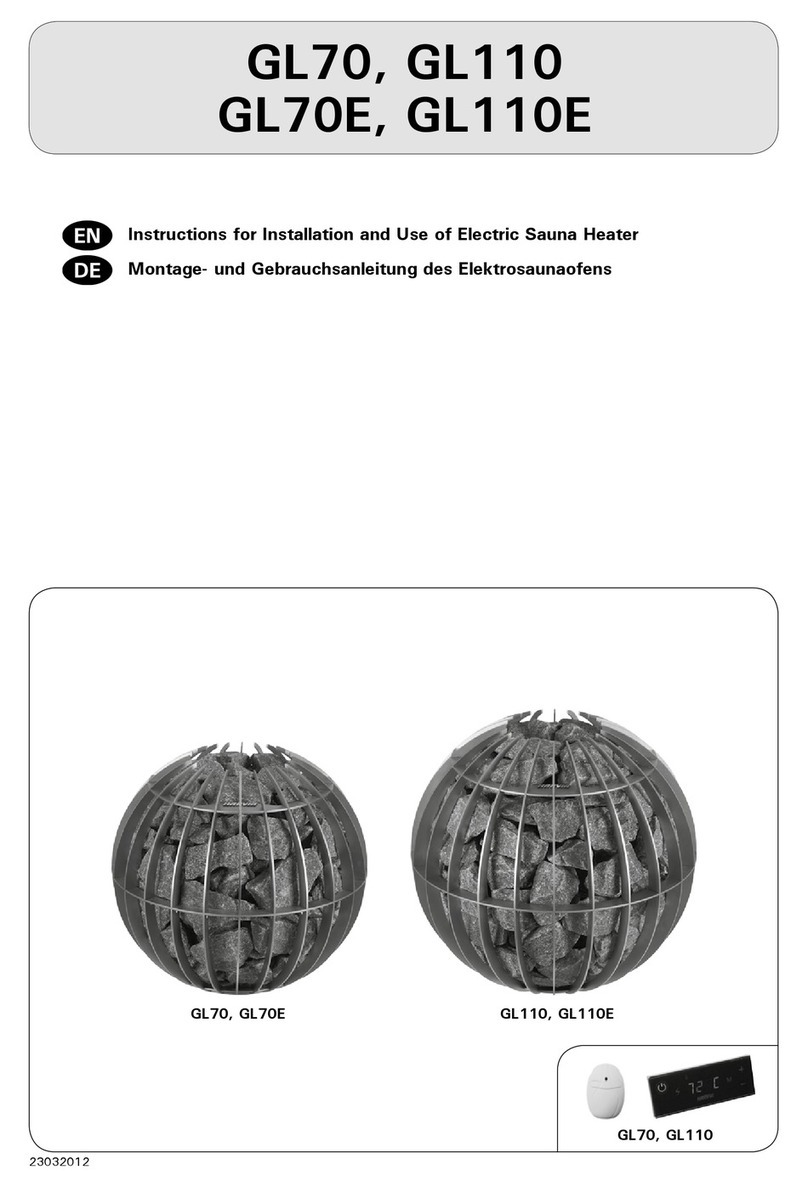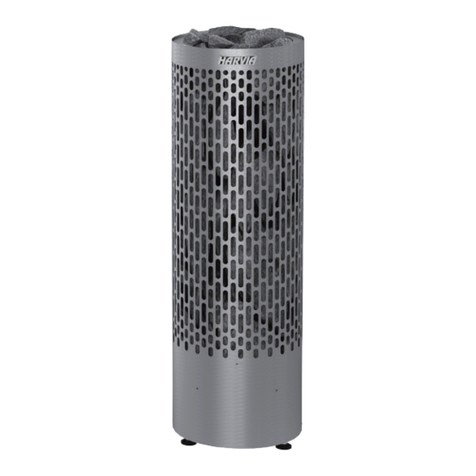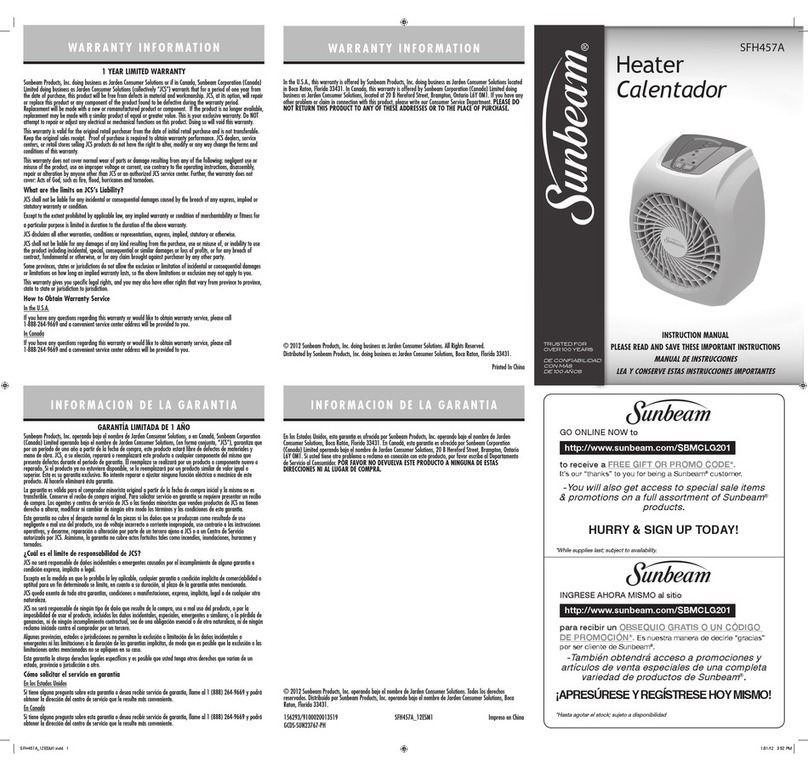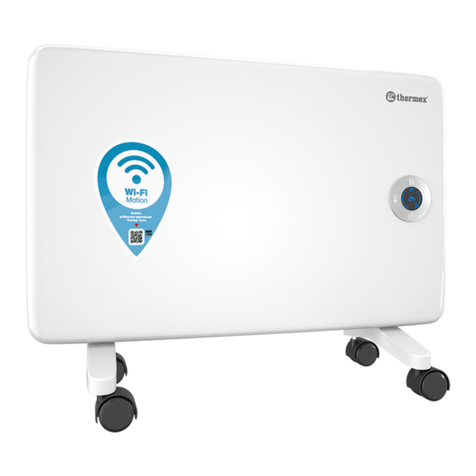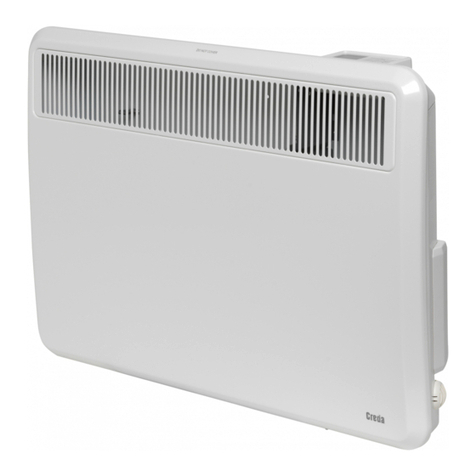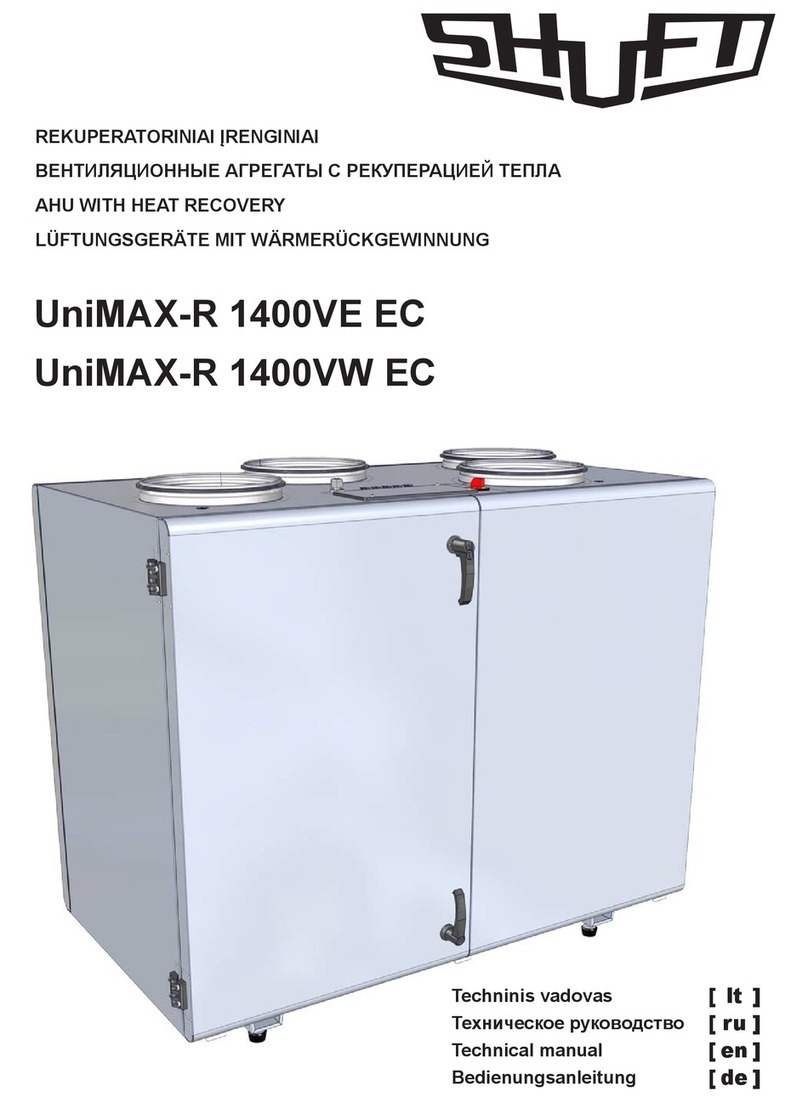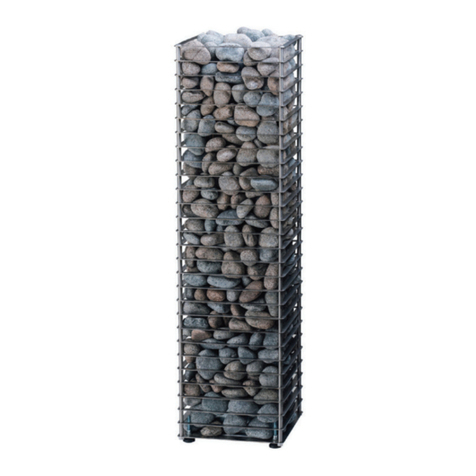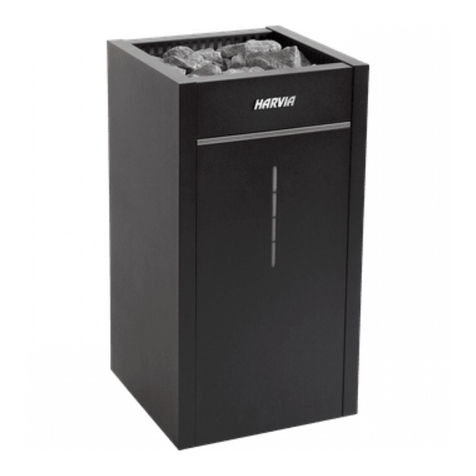Space-Ray PTS Series 100 User manual

Form #43343530
July 08
INSTALLATION AND OPERATION INSTRUCTIONS
OWNER / INSTALLER:For your safety this manual must be carefully and thoroughly read
and understood before installing, operating or servicing this heater.
INFRARED RADIANT TUBE HEATER
Two Stage Push Through System (Positive Pressure)
Models:
PTS SERIES: (40, 50, 75, 100, 125, 150, 175, 200) – N7/L7
PTU SERIES: (40, 50, 75, 100, 125, 150, 175, 200) – N7/L7
!INSTALLER:This manual is the property of the owner. Please present this manual to
the owner when you leave the job site.
WARNING: Improper installation, adjustment, alteration, service, or maintenance can
cause property damage, injury or death. Read the installation, operation and maintenance
instructions thoroughly before installing or servicing this equipment.
IF YOU SMELL GAS:
^DO NOT try to light any appliance.
^DO NOT touch any electrical switch; DO NOT use any
telephone in your building.
^IMMEDIATELY call your gas supplier from a neighbor's
telephone. Follow the gas supplier's instructions. If you
cannot reach your gas supplier, call the fire department.
DO NOT store or use gasoline or other
flammable vapors and liquids in the
vicinity of this or any other appliance.
!IMPORTANT: SAVE THIS MANUAL FOR FUTURE REFERENCE.
SPACE-RAY
Post Office Box 36485 (28236) 305 Doggett Street (28203) Charlotte, North Carolina
FOR YOUR SAFETY

Form #43343530
July 08 –1–
TABLEOFCONTENTS
SECTION DESCRIPTION PAGE
1.0) Safety........................................................................................................................................ 2
2.0) Installer Responsibility........................................................................................................... 2
3.0) General Information ............................................................................................................... 2
4.0) Minimum Clearances to Combustibles ............................................................................... 4
5.0) Specifications .......................................................................................................................... 5
6.0) Packing List ............................................................................................................................. 5
6.1) Accessory Packages ............................................................................................................... 9
7.0) Typical Layouts – PTS/U Series ........................................................................................... 11
7.1) Typical Assembly Layout........................................................................................................ 12
8.0) Dimensions – PTS Series....................................................................................................... 13
8.1) Dimensions – PTU Series ..................................................................................................... 14
8.2) Heater Assembly / Joining of Tube Sections...................................................................... 15
9.0) Typical Suspension Methods................................................................................................. 17
10.0) Assembly of Tube Sections.................................................................................................... 18
10.1) Assembly of Extension Section............................................................................................. 19
10.2) Inserting Turbulators .............................................................................................................. 20
10.3) Adding Body Reflectors.......................................................................................................... 21
11.0) Adding Optional 90º Elbow (PTS Only) ............................................................................... 22
11.1) Adding Optional Corner Reflector (PTS Only) .................................................................... 22
11.2) Adding 180º U-Bend (PTU Only)........................................................................................... 23
11.3) Adding Optional U-Bend Reflector (PTU Only) ................................................................... 23
12.0) Attaching Control Box Assembly .......................................................................................... 24
12.1) Connecting The TISS System ...............................................................................................25
13.0) Gas Connections And Regulations ....................................................................................... 28
14.0) Instructions For Pressure Test Gauge Connection............................................................. 30
15.0) Electrical Connections............................................................................................................ 31
16.0) Venting...................................................................................................................................... 34
17.0) Air For Combustion ................................................................................................................. 38
17.1) Direct Outside Air For Combustion....................................................................................... 38
18.0) Lighting and Shutdown Instructions .................................................................................... 40
19.0) Sequence of Operation .......................................................................................................... 40
20.0) Burner Component Location ................................................................................................. 41
21.0) Cleaning And Annual Maintenance...................................................................................... 42
22.0) Troubleshooting Guide ........................................................................................................... 43
23.0) Replacing Parts ....................................................................................................................... 46
23.1) Removal of Main Burner And Electrodes ............................................................................ 46
23.2) Removing Gas Valve And Manifold Assembly ................................................................... 47
23.3) Air Switch Pressure Check .................................................................................................... 47
23.4) Ignition System Checks.......................................................................................................... 48
24.0) Installation Data...................................................................................................................... 49
25.0) Replacement Parts Guide...................................................................................................... 49
This heater complies with ANSI Z83.20 (current standard) and CSA 2.34. Copies of the National Fuel Gas Code (ANSI
Z223.1-latest edition) are available from the CSA at 8501 East Pleasant Valley Road, Cleveland, Ohio 44131 or 55 Scarsdale
Road, Don Mills, Ontario M3B 2R3. All NFPA codes are available from the National Fire Protection Association, Batterymarch
Park, Quincy, Massachusetts 02269.

Form #43343530
–2– JJuly 08
1.0) SAFETY
This heater is a self-contained two stage infrared radiant tube heater. Safety information required during installation
and operation of this heater is provided in this manual and the labels on the product. The installation, service and
maintenance of this heater must be performed by a contractor qualified in the installation and service of gas fired
heating equipment.
All personnel in contact with the heater must read and understand all safety information, instructions and labels
before operation. The following symbols will be used in this manual to indicate important safety information.
Warning instructions must be followed to prevent or avoid hazards which
may cause serious injury, property damage or death.
Caution instructions must be followed to prevent incorrect operation or
installation of the heater which may cause minor injury or property damage.
2.0) INSTALLER RESPONSIBILITY
The installer is responsible for the following:
•The heater and venting, as well as electrical and gas supplies must be installed in accordance with these
installation instructions and any applicable codes and regulations.
•Every heater shall be located with respect to building construction and other equipment so as to permit access to
the heater.
•Each installer must follow the clearances to combustible materials for the heaters.
•Install the heater so that the supports and hangers are correctly spaced in accordance with these instructions. The
heater must be supported by materials having a working load limit of at least 115lbs.
•Ensure that the tube integrity safety system TISS™ supplied is installed in accordance with these instructions and
that the tension is correct.
•Supply the owner with a copy of these Installation and Operation Instructions.
•Where unvented heaters are used, gravity or mechanical means shall be provided to supply and exhaust at least 4
CFM per 1,000 Btu/hr input of installed heaters.
•Never use the heater as a support for a ladder or other access equipment. Do not hang anything from the heater.
•Supply all installation materials necessary that are not included with the heater.
•Check the nameplate to make sure that the burner is correct for the gas type in the building and the installation
altitude.
3.0) GENERAL INFORMATION
This heater is a self-contained two stage infrared radiant tube heater for use in locations where flammable gases or
vapors are not generally present (as defined by OSHA acceptable limits) and is intended for the heating of
nonresidential spaces.
INSTALLATION REQUIREMENTS
The installation must conform to local building codes or in the absence of local codes, with the National Fuel Gas
Code ANSI Z223.1/NFPA54 or the Natural Gas and Propane Installation Code CSAB149.1. Heaters shall be installed
by a licensed contractor or licensed installer. Clearances to combustibles as outlined in this manual should always
be observed. In areas used for storage of combustible materials where they may be stacked below the heater,
NFPA54 requires that the installer must post signs that will “specify the maximum permissible stacking height to
maintain the required clearances from the heater to combustibles.”

Form #43343530
July 08 –3–
(FOR CANADA ONLY)
Every heater shall be located with respect to building construction and other equipment so as to permit access to the
heater. Each installer shall use quality installation practices when locating the heater and must give consideration to
clearances to combustible materials, vehicles parked below, lights, overhead doors, storage areas with stacked
materials, sprinkler heads, gas and electrical lines and any other possible obstructions or hazards. Consideration also
must be given to service accessibility.
The heater, when installed in aircraft hangars and public garages, must be installed in accordance with ANSI/NFPA
409-latest edition (Standard for Aircraft Hangars), ANSI/NFPA 88a-latest edition (Standard for Parking Structures),
and ANSI/NFPA 88b-latest edition (Standard for Repair Garages) with the following clearances:
a. At least 10 feet above the upper surfaces of wings or engine enclosures of the highest aircraft that may be
housed in the hangar and at least 8 feet above the floor in shops, offices, and other sections of hangars
communicating with aircraft storage or service areas.
b. At least 8 feet above the floor in public garages. WARNING:Minimum clearances marked on the heater must
be maintained from vehicles parked below the heater.
a. Installation of this appliance is to be in accordance with latest edition of CAN 1-B149.1 (Installation Code for
Natural Gas Burning Appliances and Equipment), and/or CAN B149.2 (Installation Code for Propane Gas Burning
Appliances and Equipment).
b. For installation in public garages or aircraft hangars, the minimum clearances from the bottom of the infrared
heater to the upper surface of the highest aircraft or vehicle shall be 50 percent greater than the certified
minimum clearance, but the clearance shall not be less than 8 feet.
Although these heaters may be used in many applications other than space heating (e.g., process heating), Space-
Ray will not recognize the warranty for any use other than space heating.
This heater is for Indoor Installation and Covered Patio Installation only and can be used in either Vented or Unvented
mode. The term Unvented actually means Indirect Vented. While the products of combustion are expelled into the
building, national codes require ventilation in the building to dilute these products of combustion. This ventilation
may be provided by gravity or mechanical means.
This heater is not an explosion proof heater. Where the possibility of exposure to volatile and low flash point
materials exists, it could result in property damage or death. This heater must not be installed in a spray booth where
the heater can operate during the spraying process. Consult your local fire marshal or insurance company.
PTS Series Only:Since straight tube heaters are always hotter at the control end than at the flue terminal end,
always observe the minimum recommended mounting heights shown on the specification sheets and in Section
5.0 of this manual. Use U-tube configuration instead of straight tubes for spot or area heating (e.g., where a single
heater is utilized for space heating).
WARM
HOT WARM
WARM
WARM
HOT
High Altitude:
Appliances are supplied as standard for altitudes of O to 2,000 feet (0-610 m). High-altitude ratings are obtained
by a change in the orifice size. When ordered for high altitude installations, burners are supplied by the factory
ready for high altitude installation. Check the nameplate for altitude before proceeding with the installation. In
Canada the adjustment for altitude is made in accordance with Standard CGA 2.17, Gas-Fired Appliances for Use
at High Altitudes.

Form #43343530
–4– JJuly 08
4.0) MINIMUM CLEARANCES TO COMBUSTIBLES
Failure to do so may result in death, serious injury or
property damage.
Combustible material must be located outside the
clearance dimensions listed.
Minimum clearances to combustibles shall be measured from the outer surfaces as shown in the following diagram:
MINIMUM CLEARANCES TO COMBUSTIBLES
Mounted Horizontally
Angle Mounted at
45º
Model No. Sides Ceiling*Below Ends 45º Front 45º Rear
PTS/PTU 40/25 27” 6” 40” 30” 48” 12”
PTS/PTU 50/30 27” 6” 40” 30” 48” 12”
PTS/PTU 75/50 27” 6” 60” 30” 48” 12”
PTS/PTU 100/65 66” 6” 88” ** 40” 66” 20”
PTS/PTU 125/80 66” 6” 101” ** 40” 66” 20”
PTS/PTU 150/100 84” 6” 106” ** 48” 84” 24”
PTS/PTU 175/110 84” 6” 106” ** 48” 84” 24”
PTS/PTU 200/125 84” 6” 106” ** 48” 84” 24”
* When used indirect vented, minimum clearance for CEILING must be: 12” for PTS/PTU 50-75 and 18” for
PTS/PTU 100-200. If optional corner and u-bend reflectors are not used, the clearance must be 18”.
** Maximum clearance below reduces to 72” once you are 20ft. downstream from the control box.
WARNING: Certain materials or objects, when stored under the heater, will be subjected to radiant heat and
could be seriously damaged. Observe the Minimum Clearances to Combustibles listed in the manual and on the
heater at all times.
NOTE: The clearances specified above must be maintained to combustibles and other materials that may be
damaged by temperatures 90ºF above ambient temperature. Clearances to combustibles are posted on the
control box. In areas used for storage of combustible materials where they may be stacked below the heater,
NFPA54 requires that the installer must post signs that will “specify the maximum permissible stacking height to
maintain the required clearances from the heater to combustibles.” Space-Ray recommends posting these signs
adjacent to the heater thermostat or other suitable location that will provide enhanced visibility.
End End
Ceiling
Below
Front
Rear
45° Angle (Maximum)
Ceiling
Below
Side Side
Horizontal
This manual suits for next models
9
Table of contents
Other Space-Ray Electric Heater manuals
